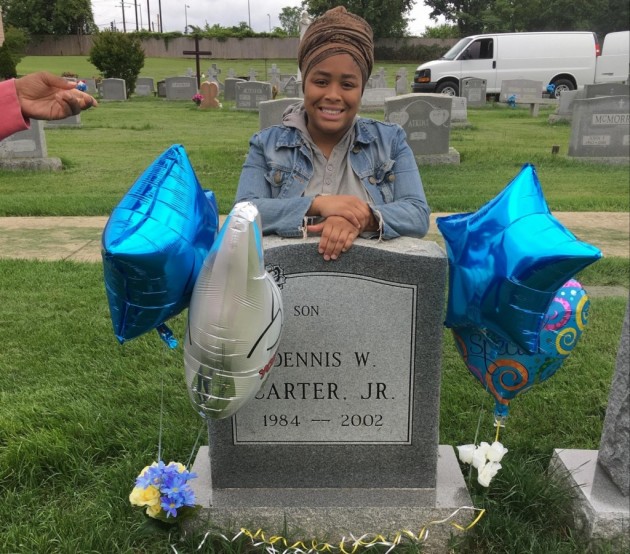They Came From Across the Nation to Advocate for Equal Education
By Christina M. Wright and Emily StanfordHoward University News Service
Hundreds of high school and college students rallied at the U.S. Supreme Court where the justices heard arguments in two cases that raise questions about how public schools use race to promote integration.
The students shivering in the near-freezing weather outside the court came from Atlanta, Cleveland, Los Angeles and other cities at the behest of organizations including the NAACP and By Any Means Necessary, also known as BAMN. The racially and ethnically mixed crowd included blacks, white, Latinos and Asians. The first demonstrators to arrive on Dec. 4 were five busloads of Howard University students who marched from the Capitol to the Supreme Court building.
The signs some demonstrators held aloft expressed their worry that the court might be persuaded to undo some of the landmark Brown v. Board of Education decision that outlawed separate and unequal education. “Don’t Hate, Integrate,” “Old Problem New Day,” “Give Kids Good Schools” and “Save “Brown v. Board of Education” were among the slogans on the placards.
Some demonstrators appeared confused to Jim Wellinghoff, the father-in-law of an attorney arguing today against using race as a deciding factor. Wellinghoff said he heard talk about threats to affirmative action among the demonstrators. The cases the court is hearing today could not possibly end affirmative action, Wellinghoff said.
The students weren’t the only ones who believed the cases have implications for affirmative action. Just before sunrise, Martha Moore, 37, an administrative assistant, said she drove 30 minutes from her home in Manassas, Va., to stand outside the court.
“I’m here because affirmative action makes it illegal to discriminate against all women and children of any race,” Moore said. The mother of three said that her husband was not with her, and had opted to go to work instead. “Affirmative action is a sensitive and rarely discussed subject in our house, so I came alone,” she said.
“Affirmative action is beneficial to me, the middle-class white woman and someone should represent that population,” Moore said. “I feel ashamed that there are not more people that look like me here. … This is a cause that is not gender biased. It is cross-cultural and all people – blacks, whites, browns and yellows – should have full access to everything that promotes the pursuit of happiness.”
The arguments before the Supreme Court were based on cases that originated in Seattle and in Louisville and address how race factors in decisions to bus students or assign students to specific schools.
In the Seattle case, school officials have contended that considering a student’s race as a “tie breaker” in school assignments was justified to counter housing patterns that resulted in racially isolated neighborhoods. Racially diverse schools are essential to quality education, the schools argue.
In their brief to the court, Seattle school officials said the school board believes that a diverse student enrollment “fosters racial and cultural understanding by increasing the likelihood that students will discuss racial or ethnic issues and be more likely to socialize with people of different races. … Diversity is … a valuable resource for teaching students to become citizens in a multi-racial/multi-ethnic world.”
The brief advocating the position of parents who oppose race as a “tie breaker” in Seattle argued that the method “prefers one individual to another for no reason other than race and thereby violates the heart of the Equal Protection Clause-the principle that our Constitution is color blind.”
The parents also contend in the brief that “the District’s race preference plan in particular serves no compelling interest because its only result is trivial changes in pigmentation diversity at a few already diverse schools.”
Two Asian students, however, said that the issues go beyond pigmentation. Ronald Cruz, 29, a BAMN organizer and law student at the University of San Francisco, said that these are the most important civil rights cases in 50 years and that they will determine whether America progresses.
“Because of integration, I was able to go to integrated magnet schools that had a lot of funding and people of all races with a number of resources that were available to me,” said Cruz, whose working-class parents moved to San Francisco from the Philippines.
David Lai, a junior from Baltimore Polytechnic Institute, came to the protest today with his school’s drama class and Black Awareness Club. “We support integration and Brown vs. Board,” he said.
Lai added that he had benefited from affirmative action, but emphasized that merit and academic performance were also important.
In interviews in the days before today’s rally, some students said their life experiences had motivated them to participate or not participate.
“I went to a predominantly white school, and I still believe that we should have integration,” said Ashley Williams, a freshman political science major at Howard University.
Markeiya Polite, a Howard University sophomore biology major from Louisiana, said good and bad results came from integration.
Before integration, Polite said, “There were so many more opportunities for black people. My grandparents tell me all the time that before the white people came and took over, life for blacks was better.”
Virginia Hall and Jessica DeTiege also contributed to this article. See related articles under “Politics.”



